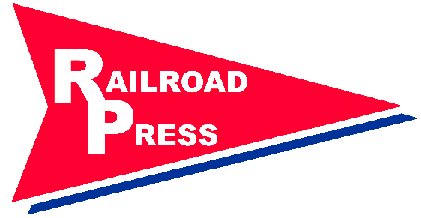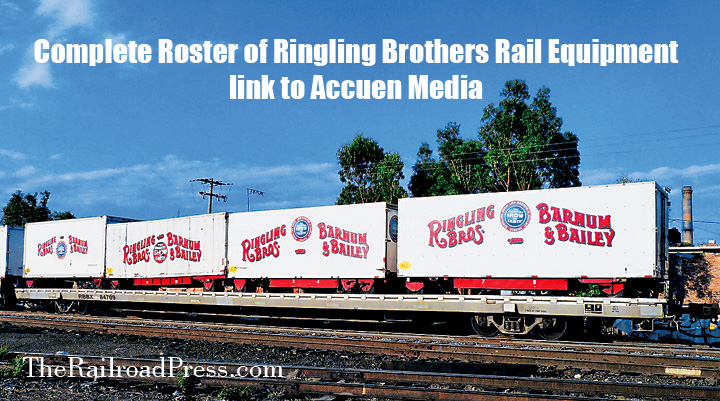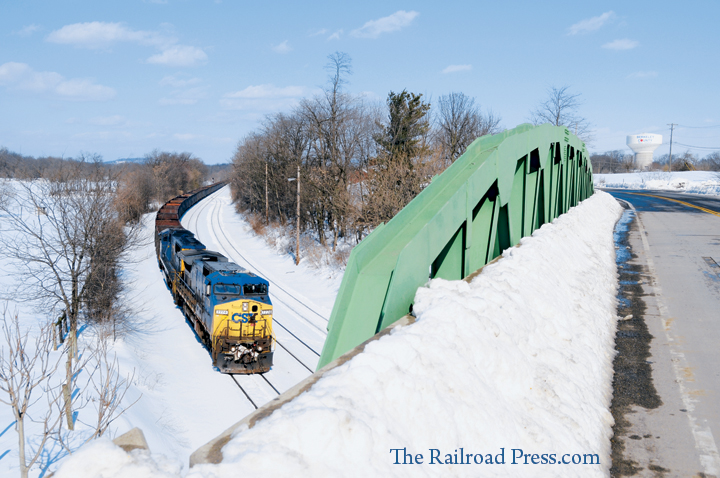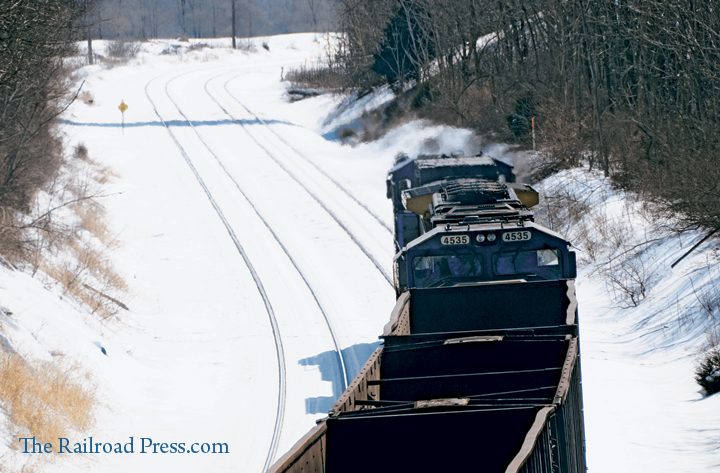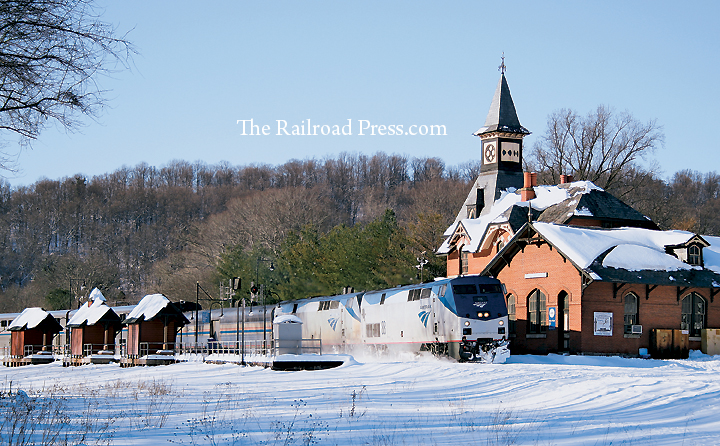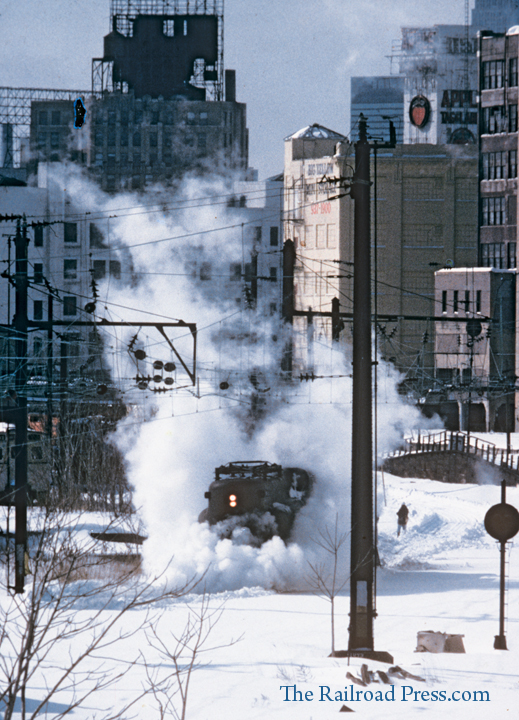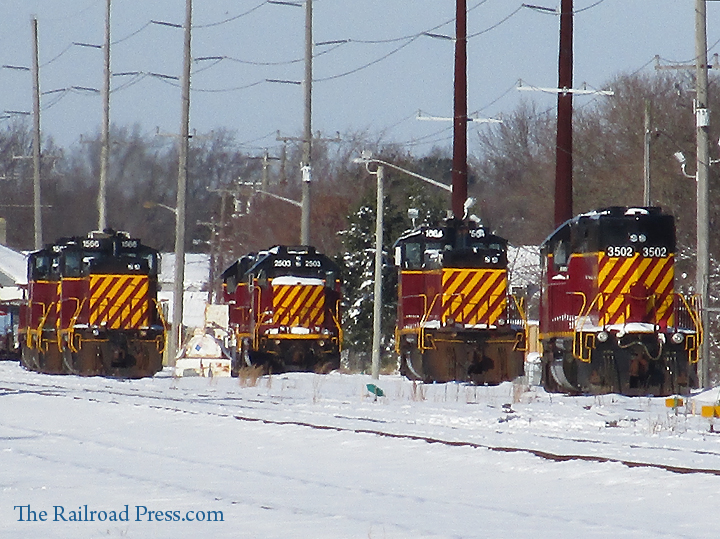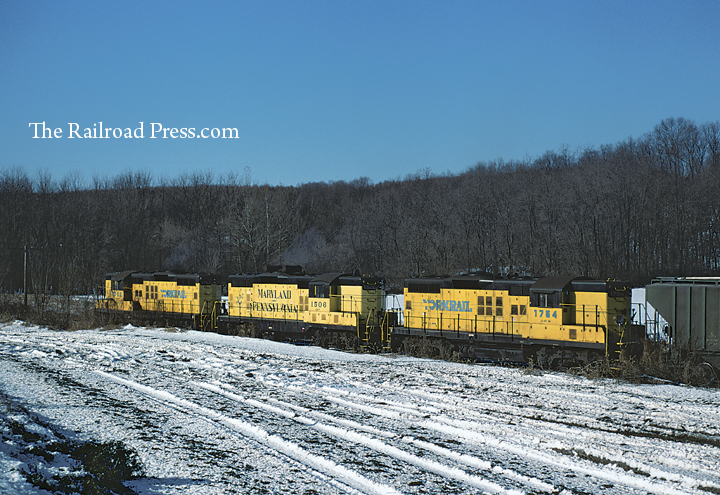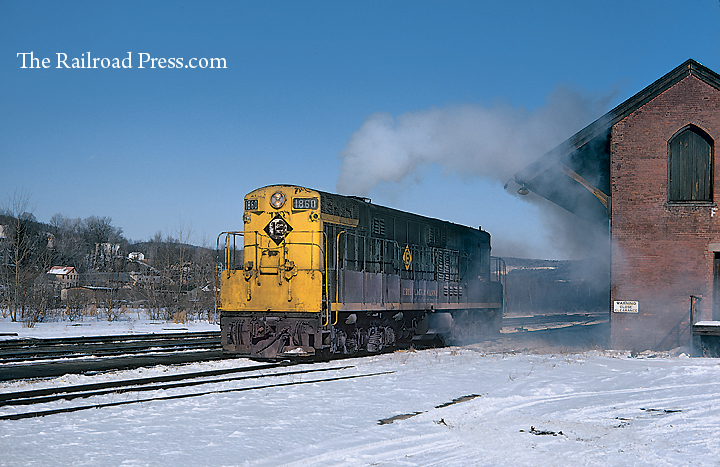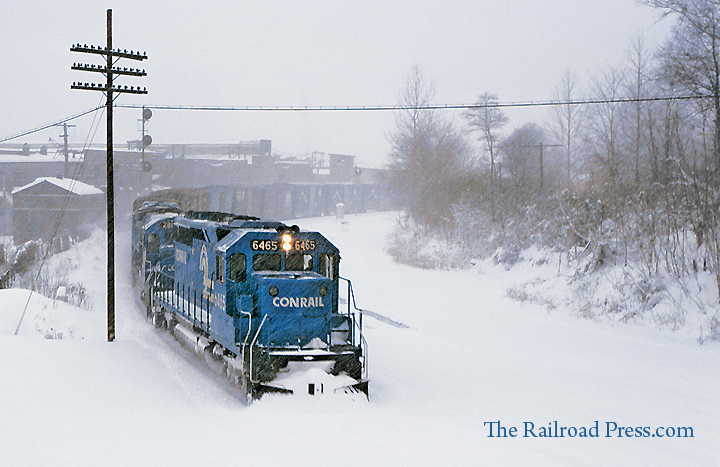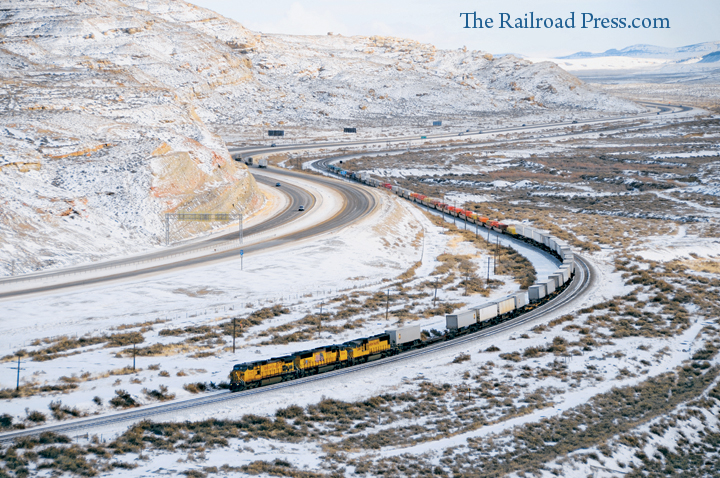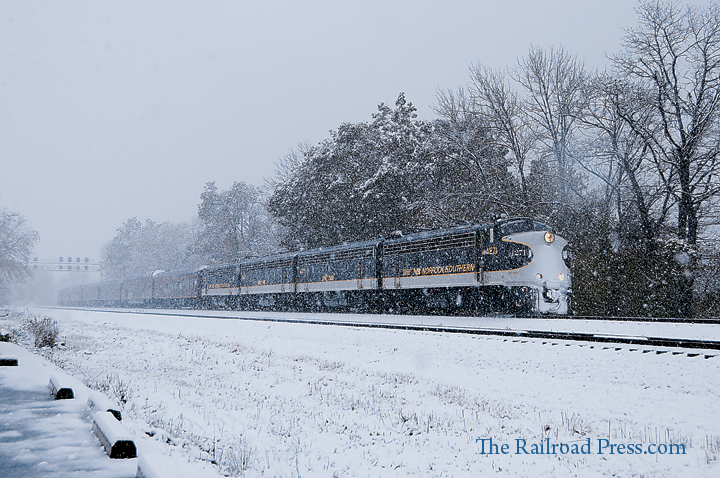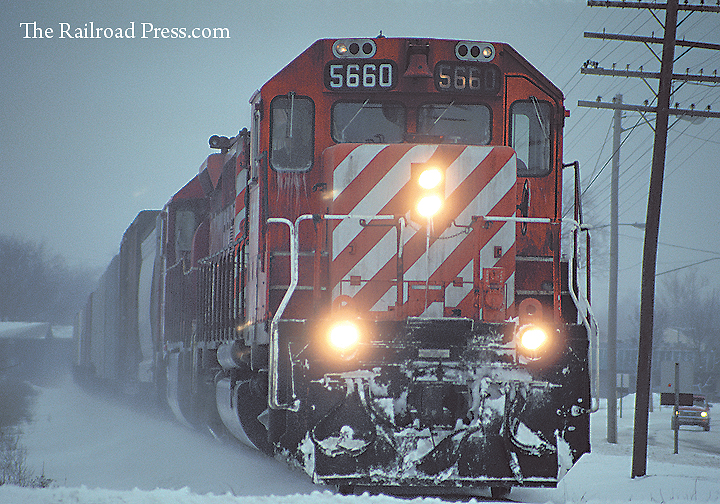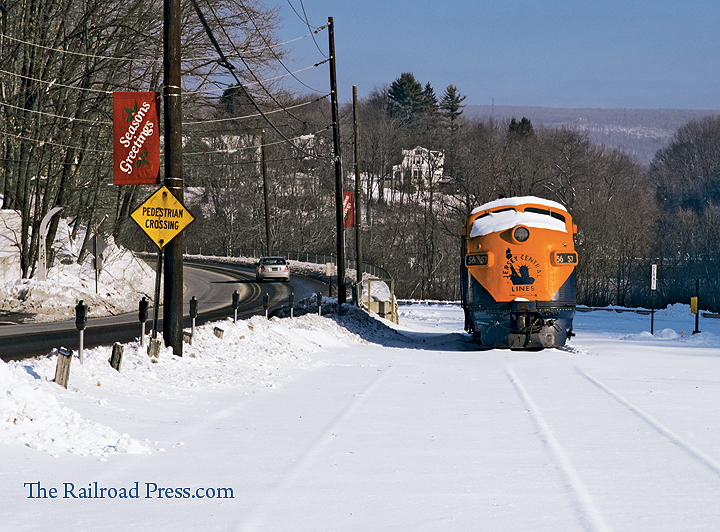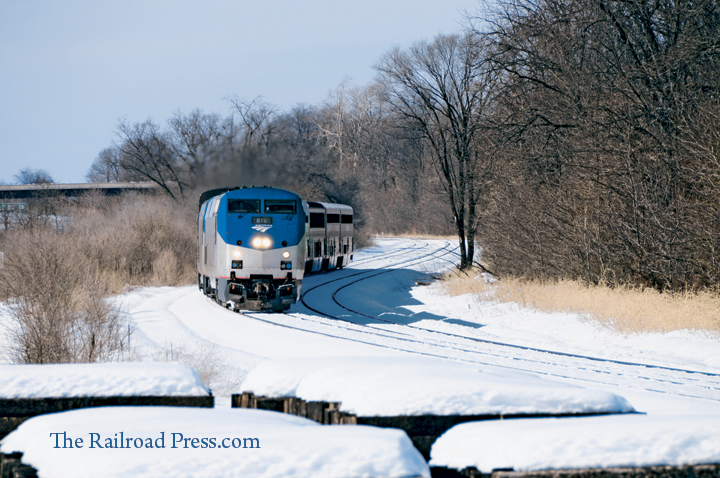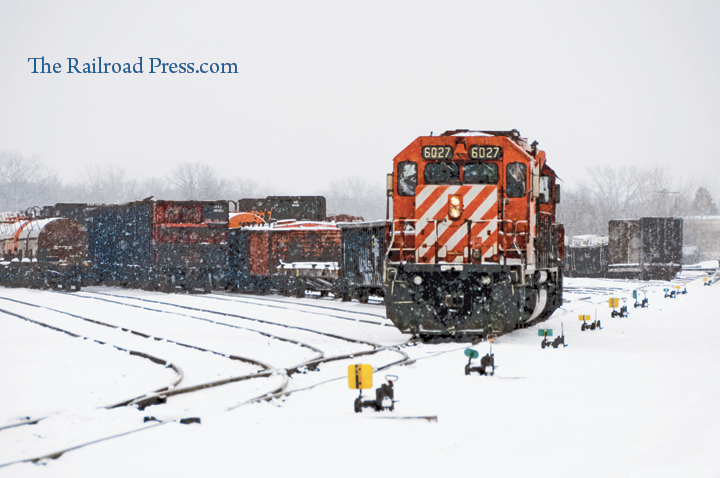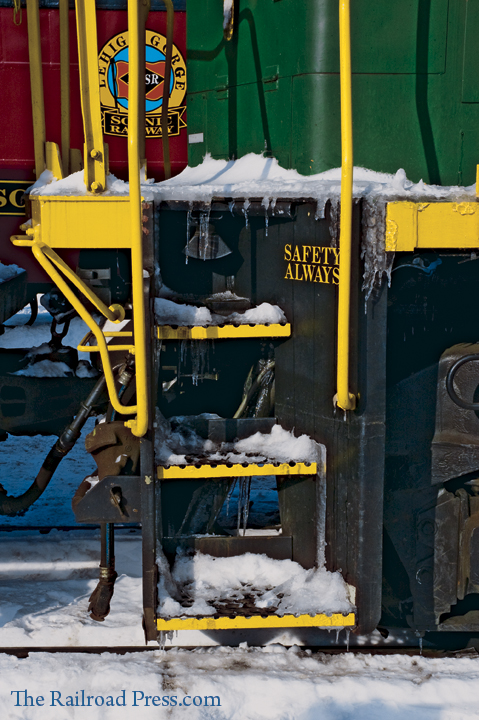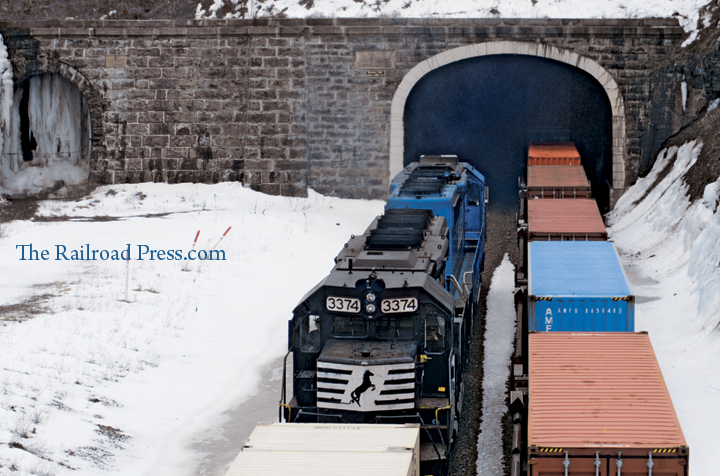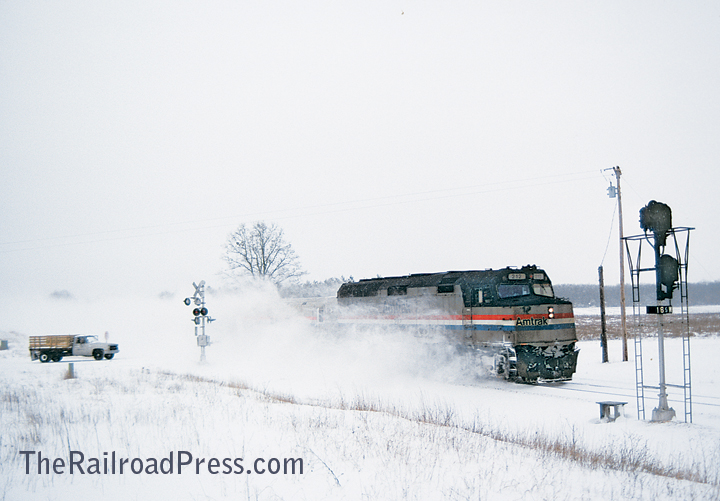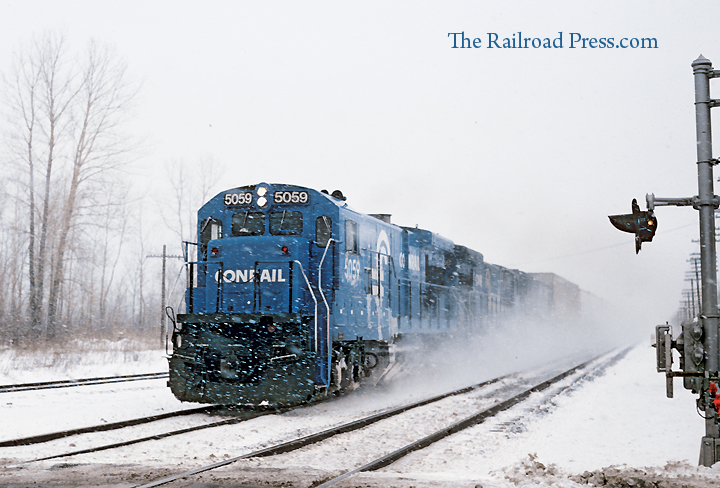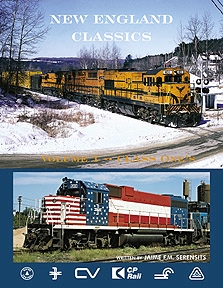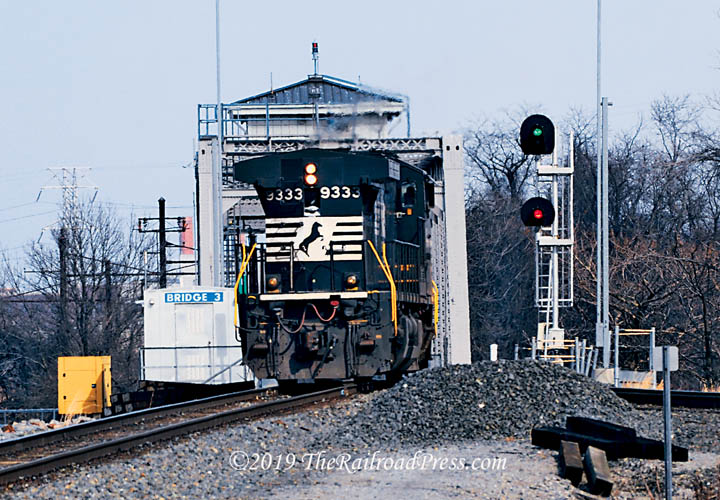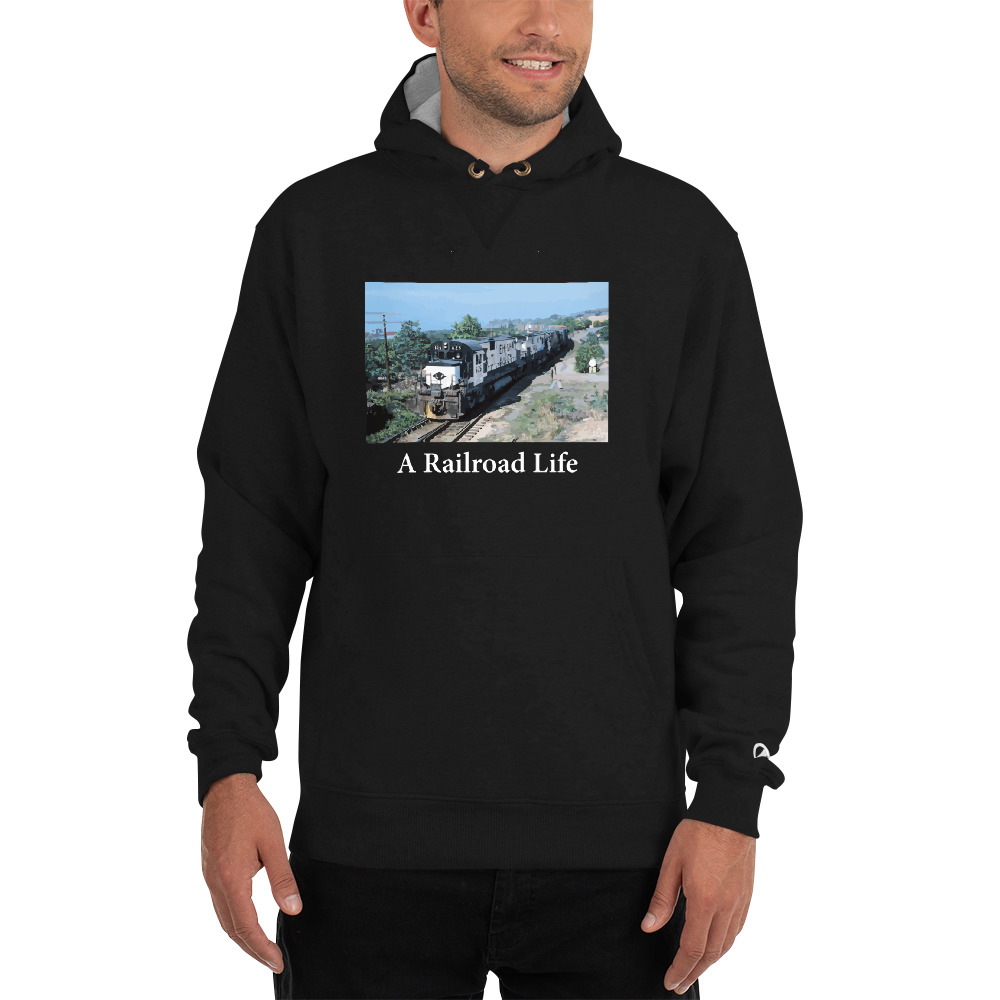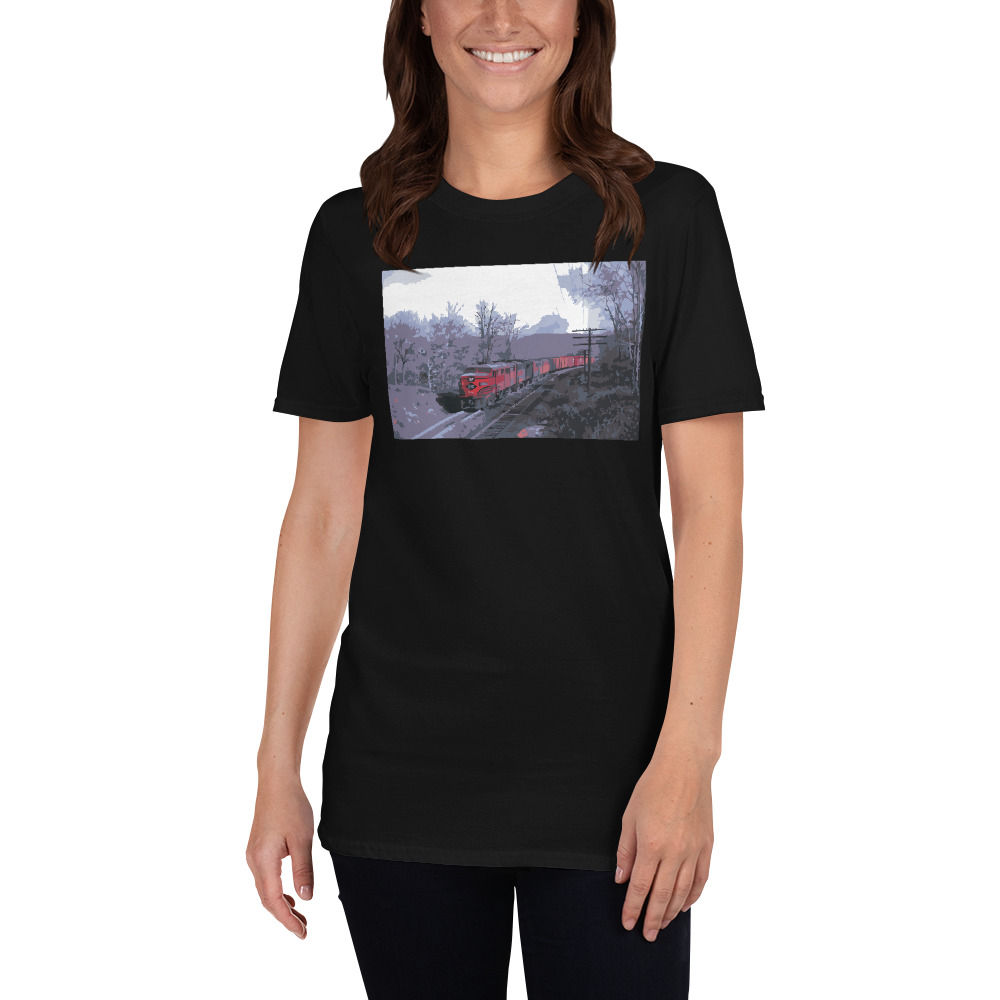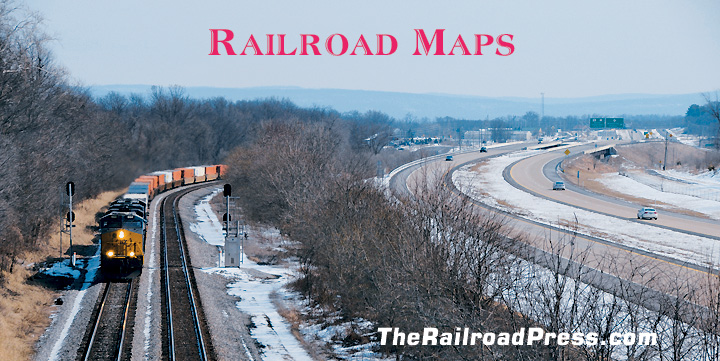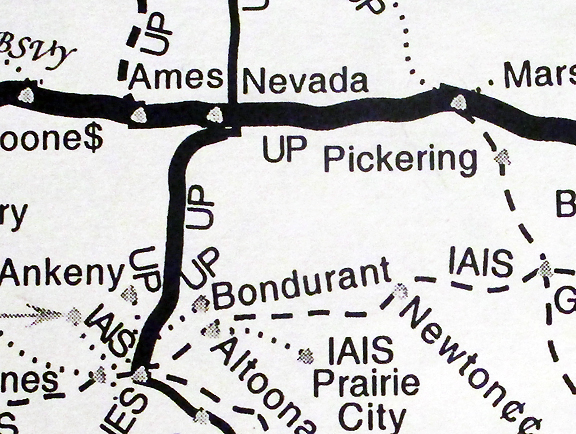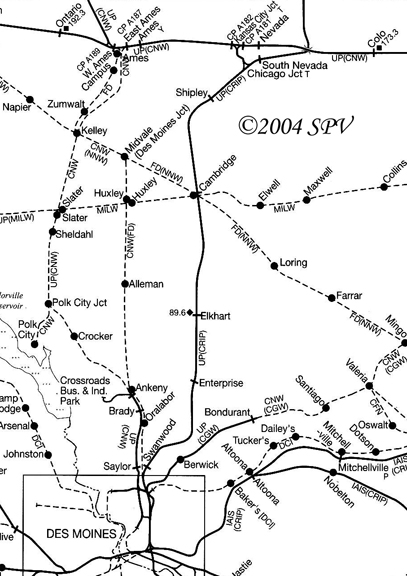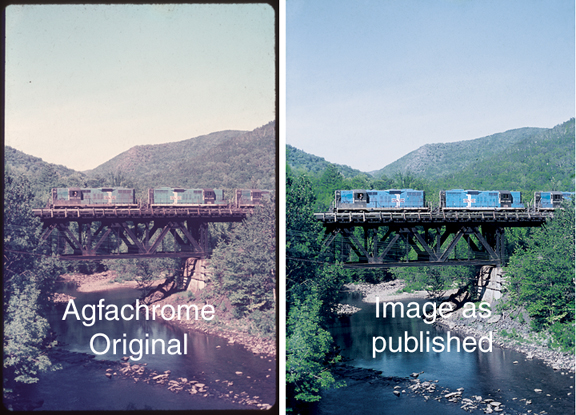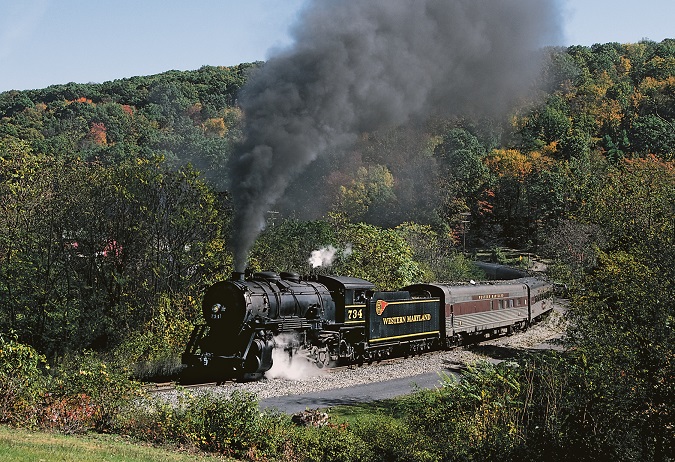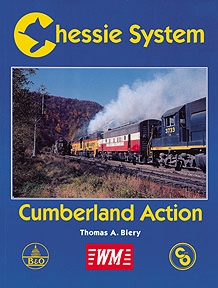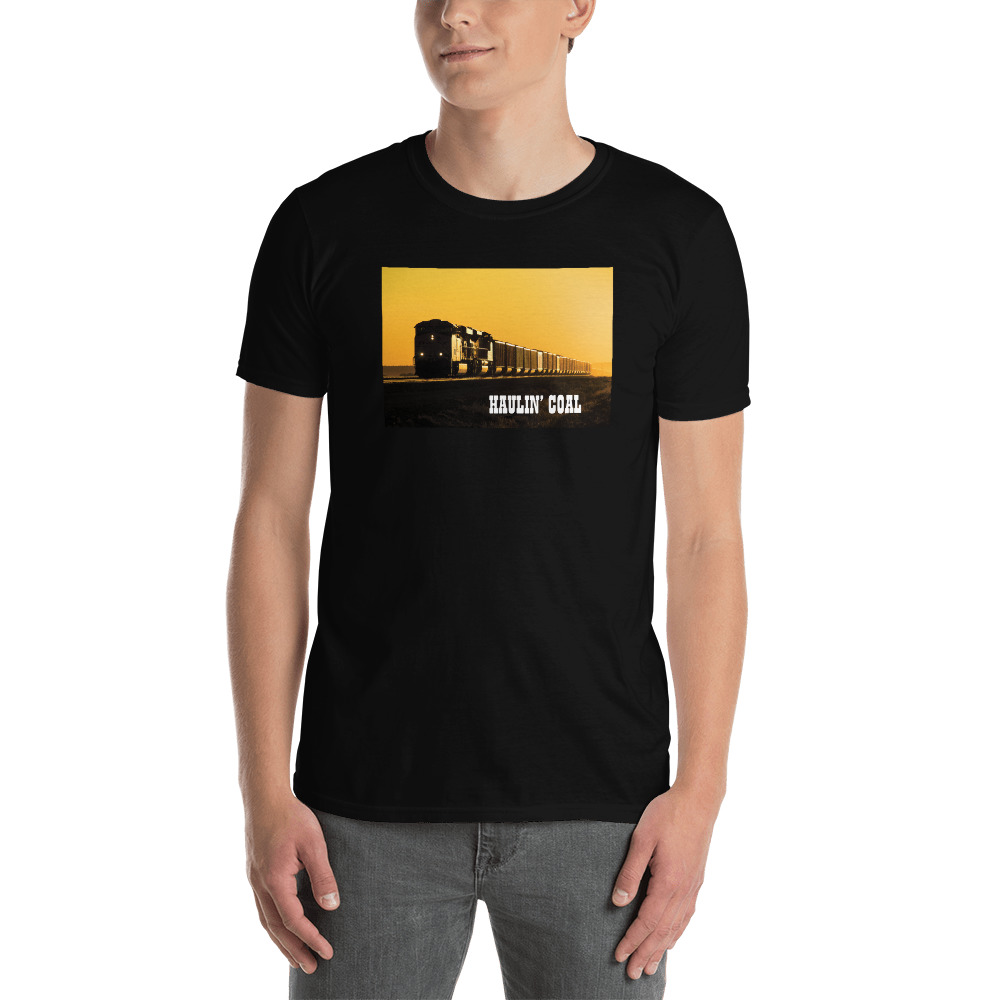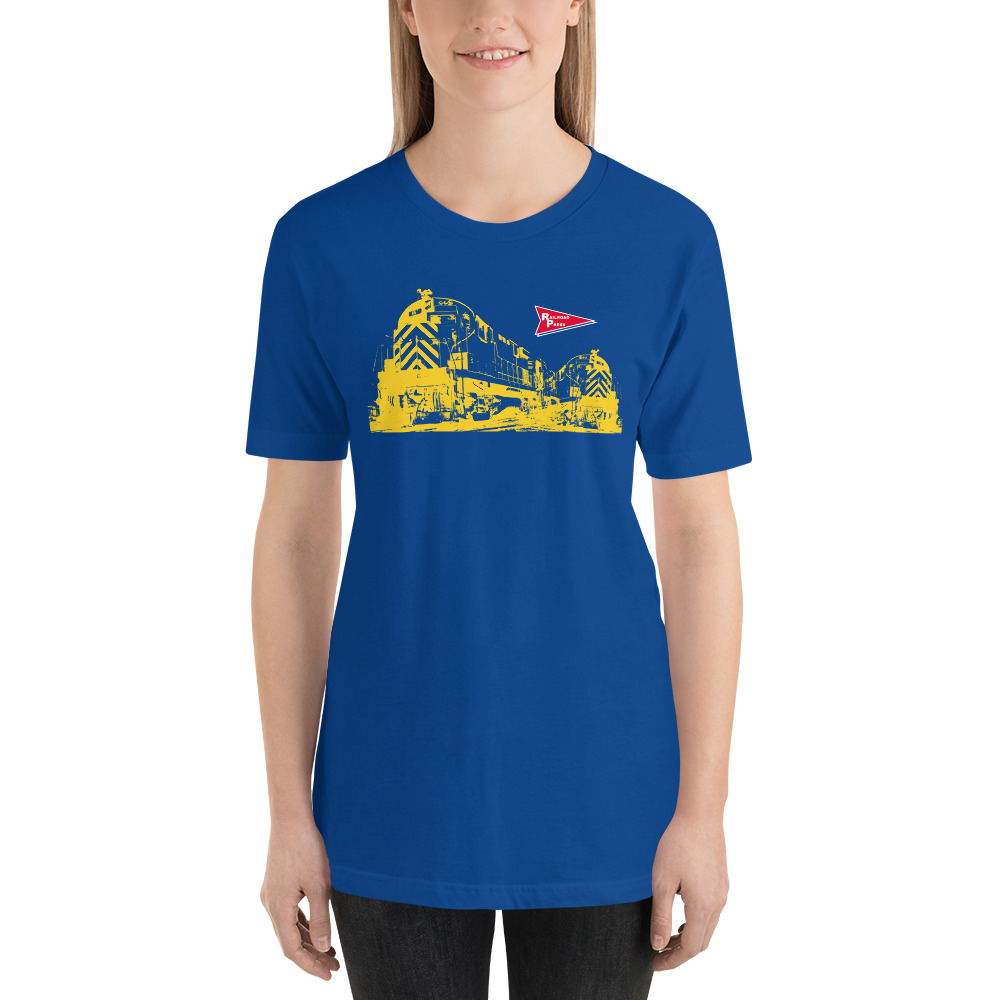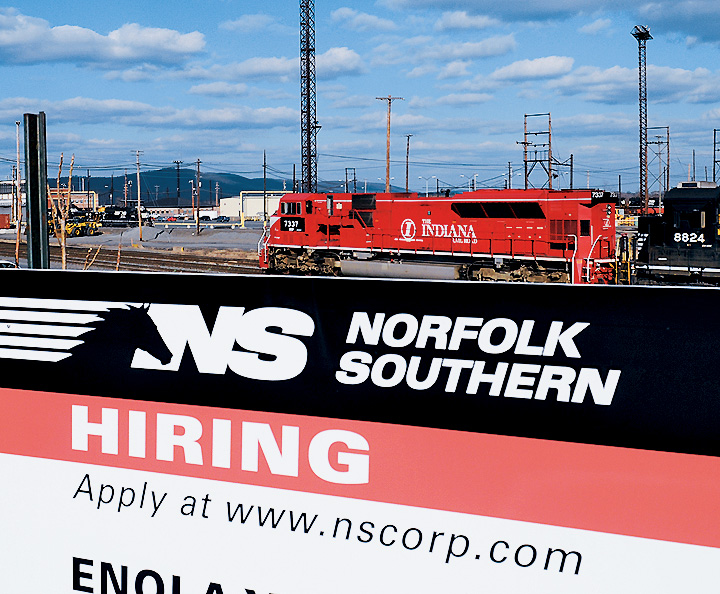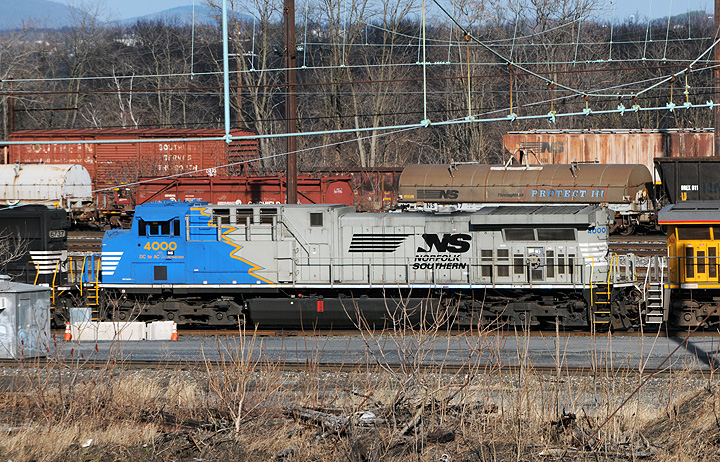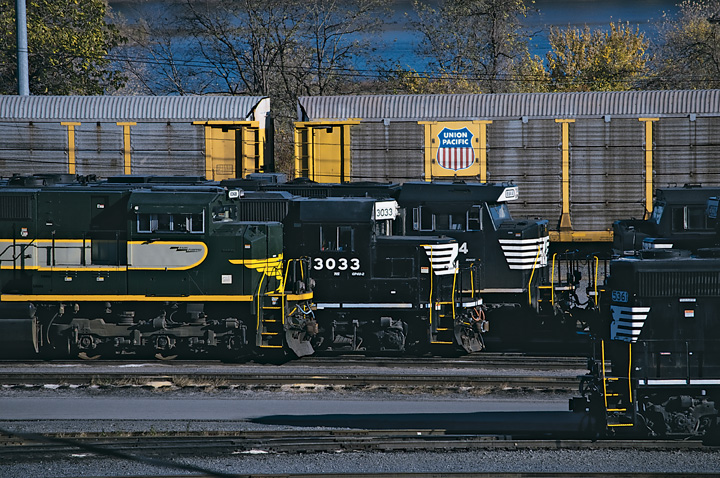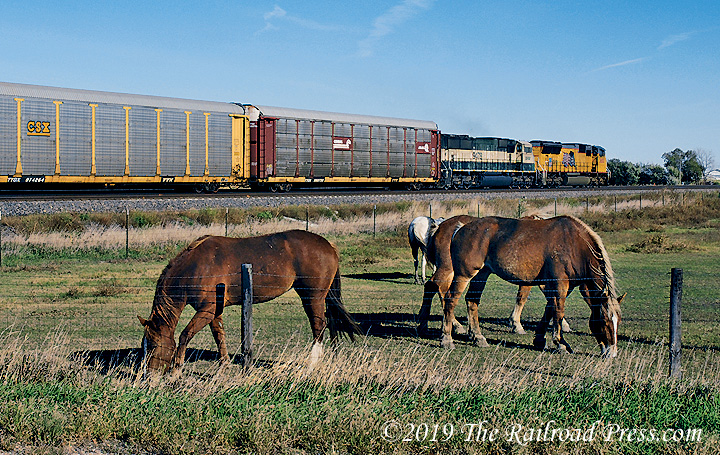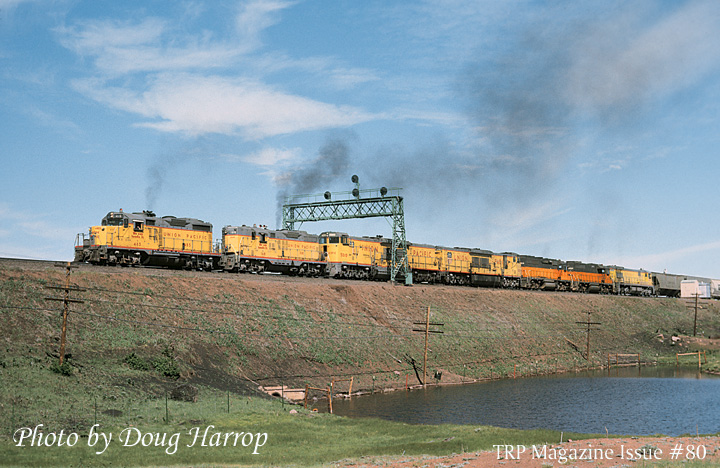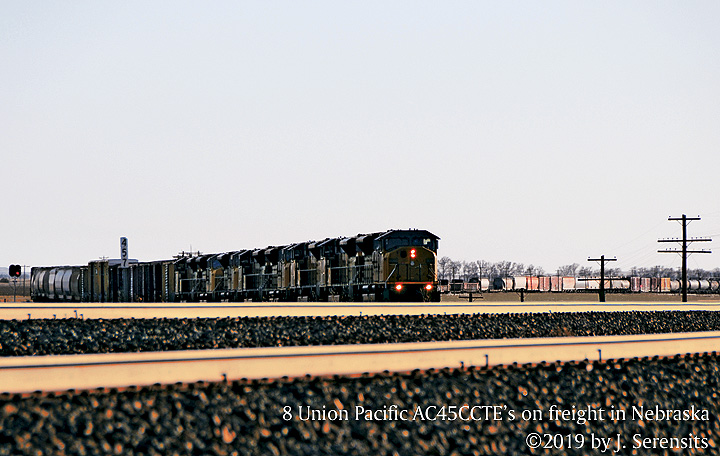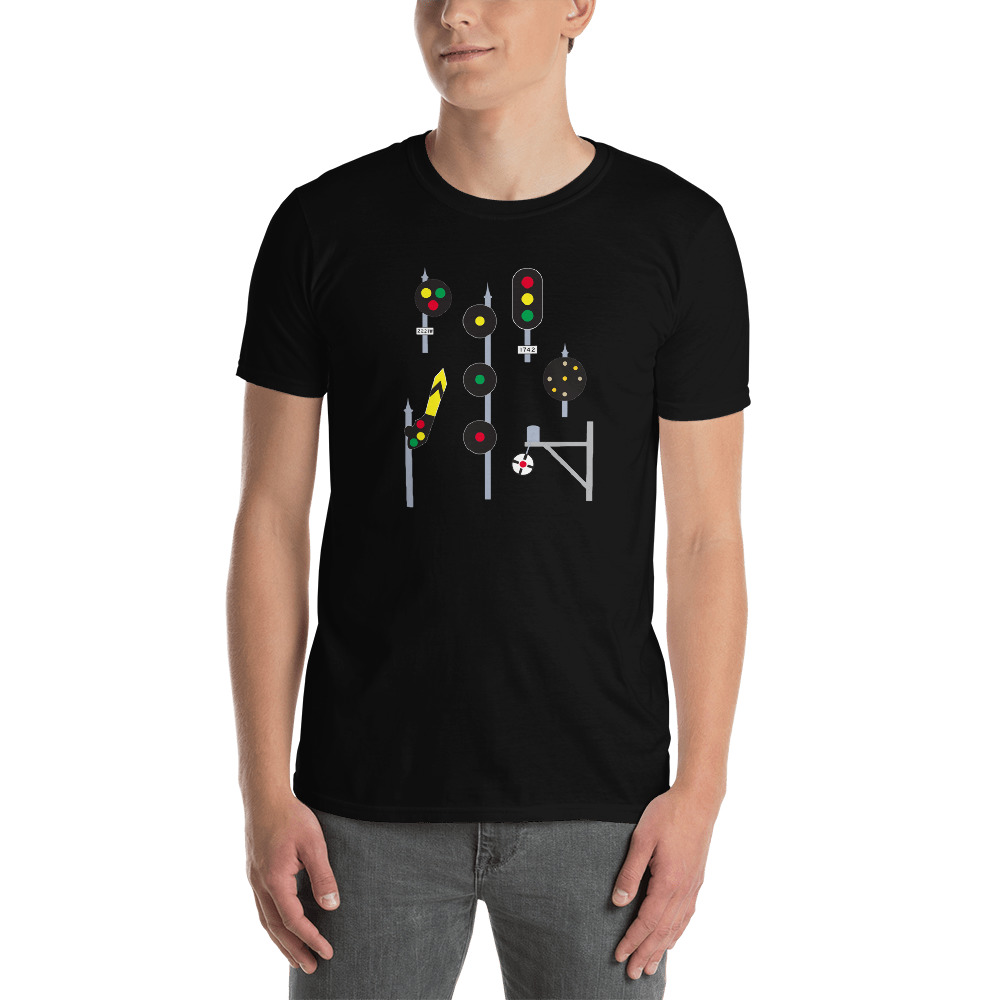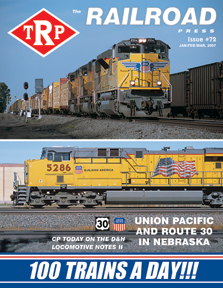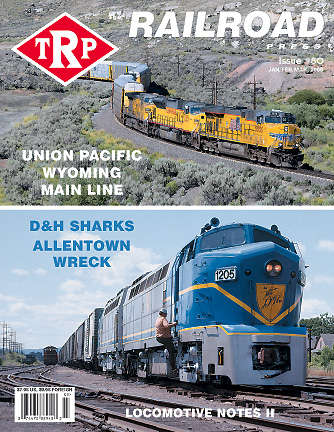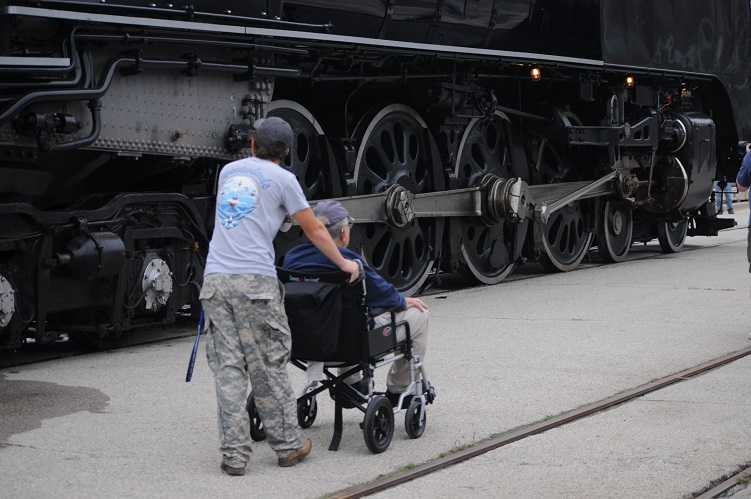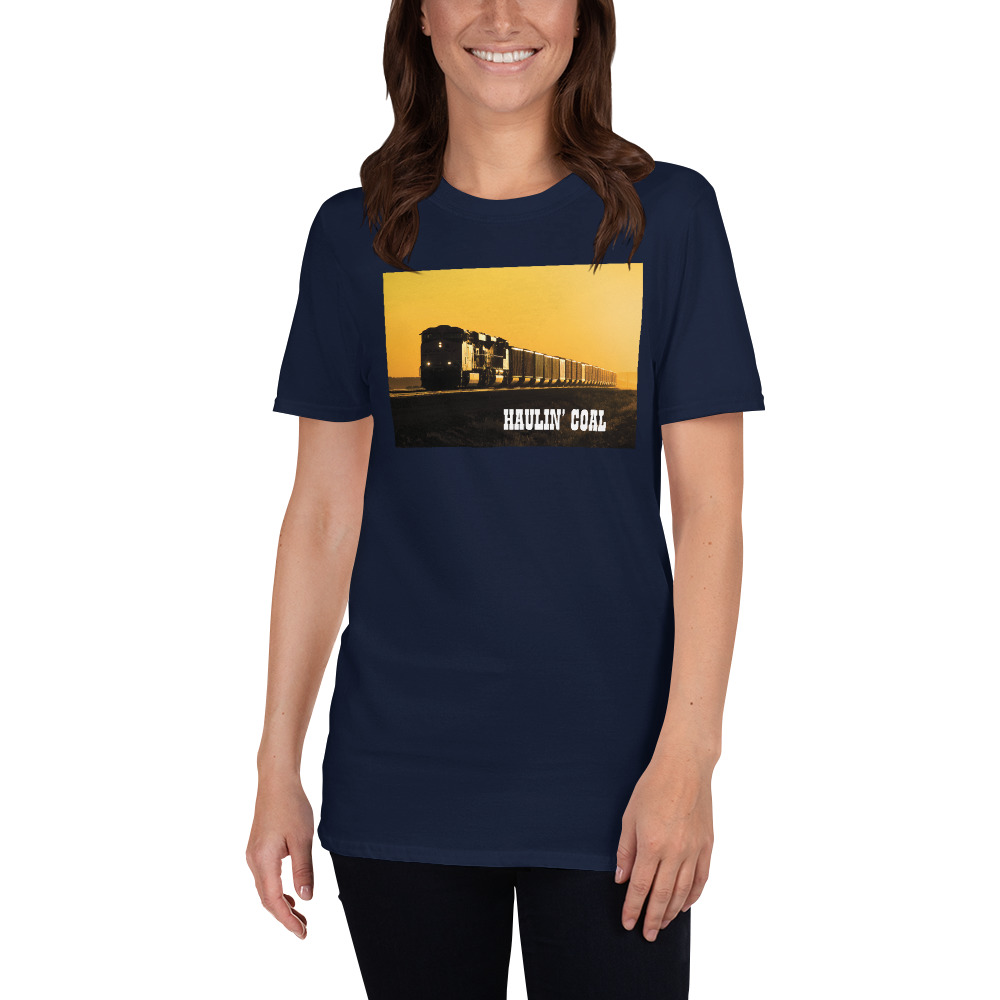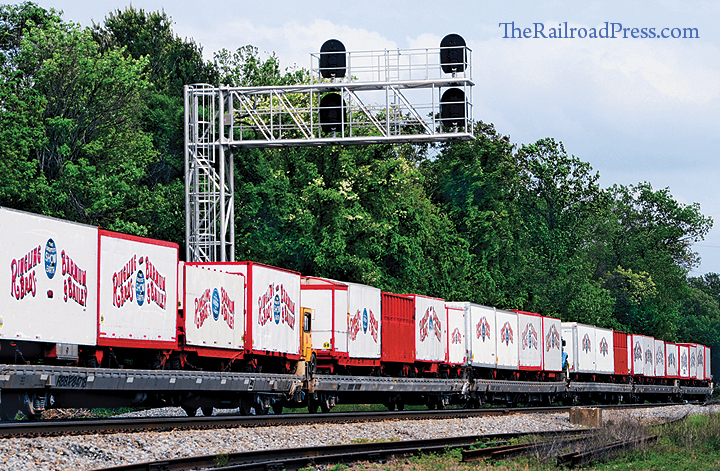
The saga of the Last Circus train that left Charleston, West Virginia, for New York City on May 8, 2017, actually started long before that date. Almost exactly one year earlier, the Ringling Brothers and Barnum & Bailey Circus relented to immense pressure and removed the elephants from their show. As a railfan, when I heard that the elephants would no longer be part of the performance, I lamented the loss of those unique cars that were used to transport the elephants from city to city. The final show with the elephants was to be held at Wilkes-Barre on May 1, 2016, so I decided to drive up and photograph the train for the last time with those railcars. The event that I experienced was much more in depth than I could ever have imagined. In addition to the train photos and operating information, you’ll read some first-hand accounts as to the events surrounding these historic rail movements.
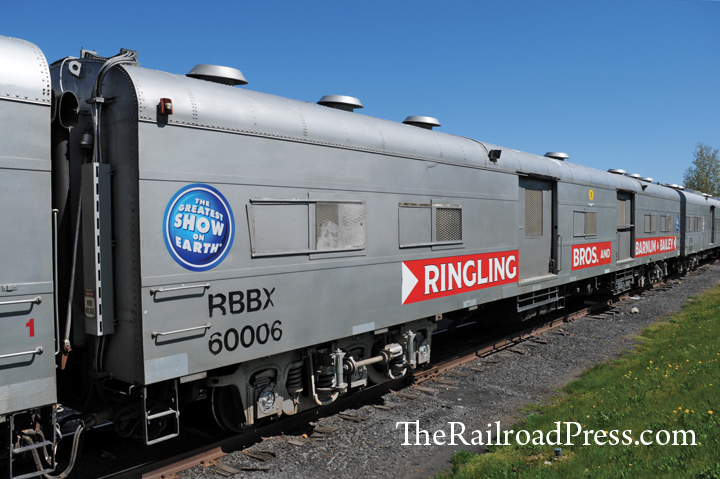
After finding and photographing the elephant carriers parked at a rail siding not too far from the show site (remember, they had to WALK the elephants from the train to their temporary homes!), I drove to the arena, as I thought it would be interesting to see the elephants when they were to be loaded into tractor-trailers, rather than the railcars. When I arrived I was shocked to find protesters on the site. There were news crews who interviewed attendees, employees and protesters. I learned that just as there are railfans, there are “elephant fans.” They knew the elephants. They knew the handlers. There were three things that made a very strong impact on me. First, everyone who came to see the show loved to see the elephants and didn’t want to see them sidelined. The second thing I felt was that these animals were loved and treated with the utmost care and respect, based on how I saw their handlers communicate with them. They reminded me of people who cared for horses. The “elephant fans,” who obviously loved them, had nothing but praise for the circus personnel. The third thing I realized is that the circus was not going to make it for long without the elephants. They were definitely the star attraction. At one point, the string of elephants who had been performing in the arena paraded right past me on their way back to their outside accommodations and it was something that I will never forget.
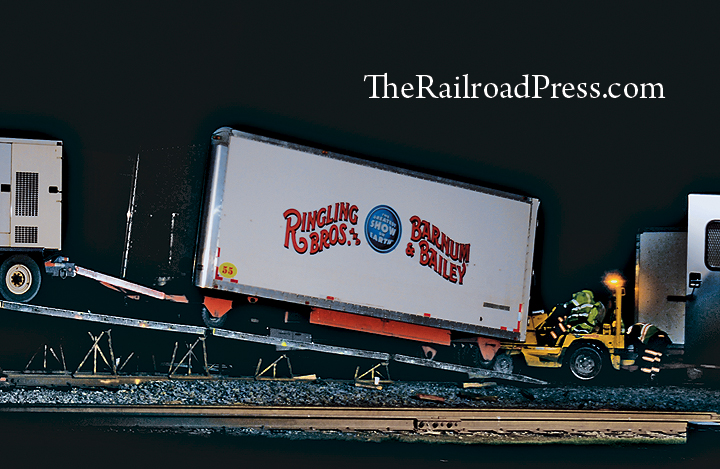
Later that night, when they were packing everything up to go to the next city, I met a creative railfan with floodlights mounted on his truck. That is an amazing operation to see, as they pulled strings of circus wagons up the steep ramp onto the beds of the flatcars with pick-up trucks and pushed them with a Bobcat! This rivals the actual circus that played under the bigtop for skill, action and audio/visual excitement!
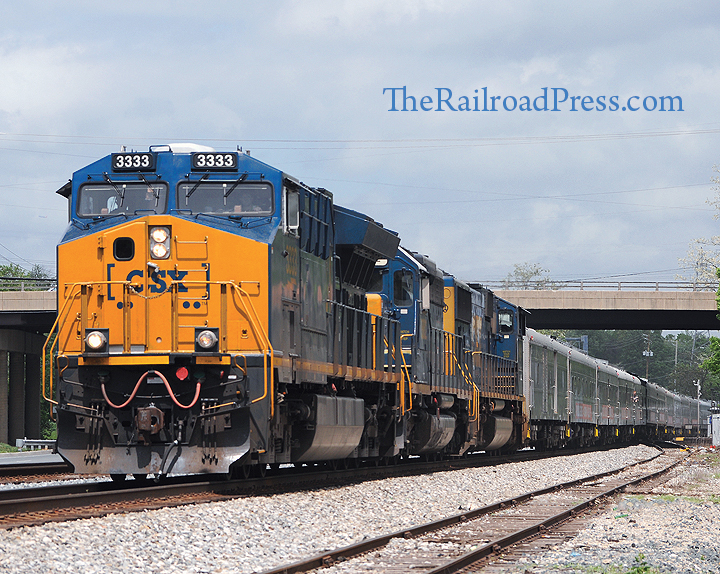
In Spring of 2017, I was alerted to the fact that the circus would be shutting down for good in May and the final run of the Ringling Brothers and Barnum & Bailey circus train would occur on May 9, as the train would run from Charleston, West Virginia, to New York City for its final performance. On May 1 and 2, exactly one year after the last show with the elephants at Wilkes-Barre, I photographed the train heading west to Charleston. CSX assigned ET44AH #3333 to lead the train, and it was very clean. After catching it once on the B&O main line between Baltimore and Washington and then again in northern Virginia beneath the cantilever signals at Burke on the Southern (VRE) main, I headed for the Interstates to get well ahead of the train in order to get some night photos. I set up camp in far-away Bluefield, on the Virginia / West Virginia border. I clearly remember standing on an overpass in Bluefield in the wee hours of the morning and watching the train slowly roll into town. As the passenger cars passed me, I noticed that some of the windows were decorated with Christmas lights! As the flats crept by I saw wires, pipes, vehicles, machines and lots of gadgets. I realized that what I was seeing was a hundred years of learning and improvisation. This train had everything it needed because as crews had to fix something or get it to work, they found a way and kept that tool handy. This was a self-contained city on steel wheels and all this knowledge would soon be scattered to the four winds, never to live again. That alone was staggering to consider, and then I remembered all the people who would soon be evicted from their “homes” and forced to find another job. Not only were we losing a train, but it was the destruction of a community, as well. “Greatest Show on Earth” wasn’t just a slogan… it truly was.
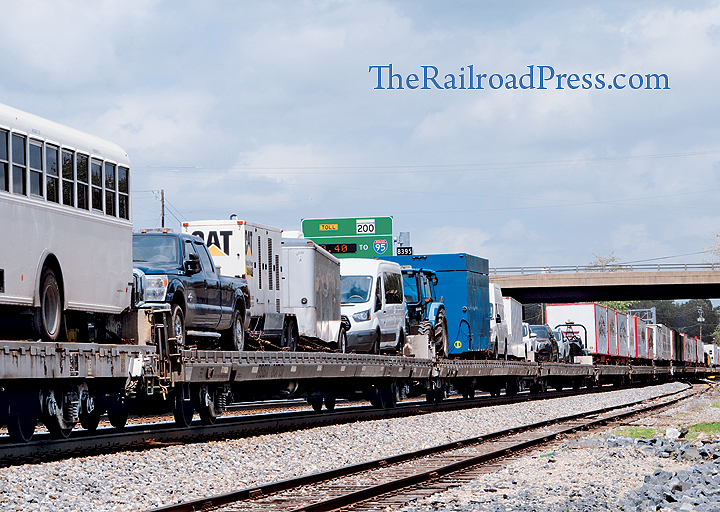
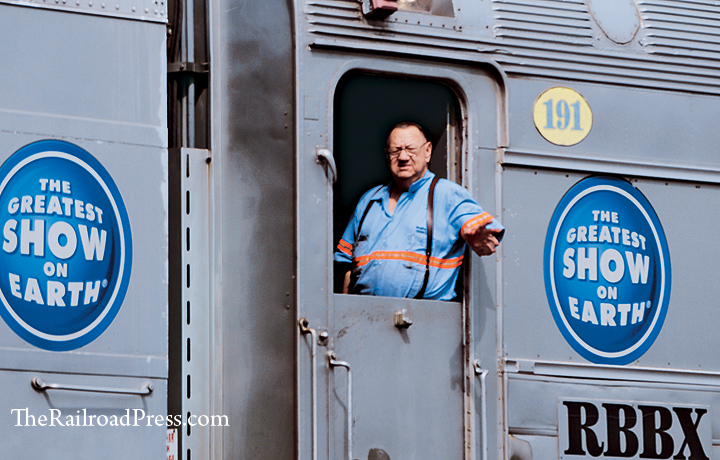
The next morning was very clear and bright. Thanks to an onboard railfan angel who updated the location of the train by making phone calls, I was able to set up for the first shot of the day on the old Virginian Railway at Pinnacle Creek Jct. in Pineville, West Virginia. I later met that “Angel,” whose name is Rhett Coates. His contribution to the knowledge of the operations of the circus train is immeasurable and we owe him a debt of gratitude. I was soon joined by another railfan who launched a bright orange drone. As the day went on, I would see drones everywhere! While a drone could give you spectacular scenic views, the person on the ground was able to capture what was, to me at least, the essence of what this was really about — this train was alive! Unlike modern hermetically sealed passenger trains, there was someone enjoying the fresh air at nearly every dutch door. People smiled, people waved, people laughed! I took every opportunity I could to photograph them as they exchanged waves with the onlookers and took in the beautiful Appalachian scenery.
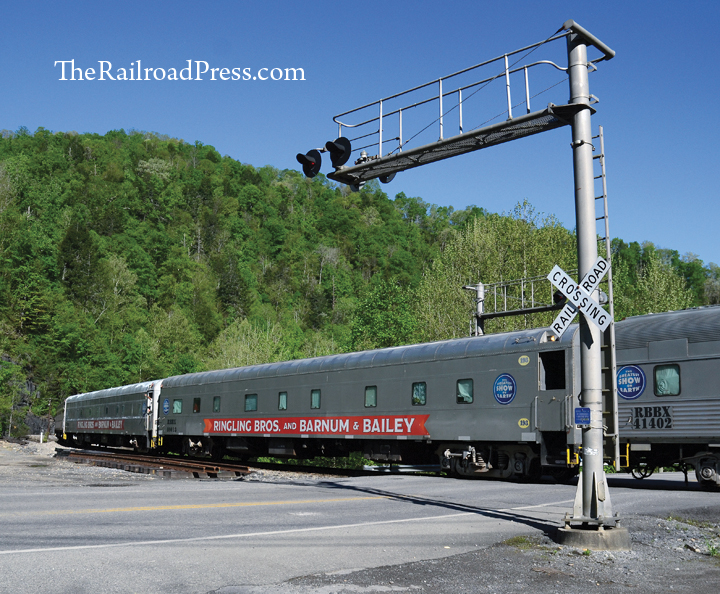
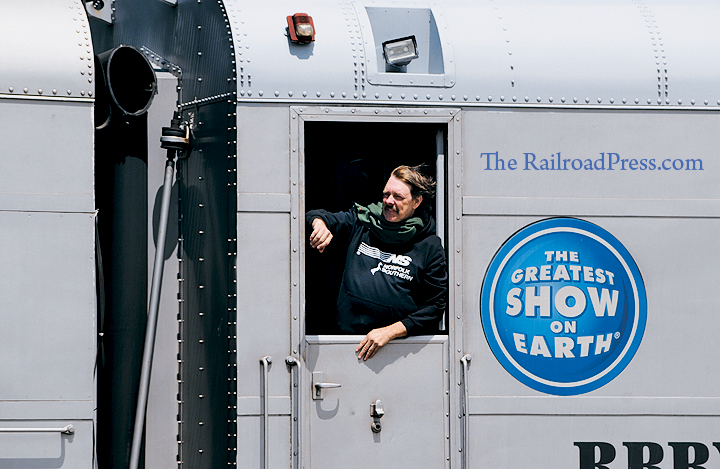
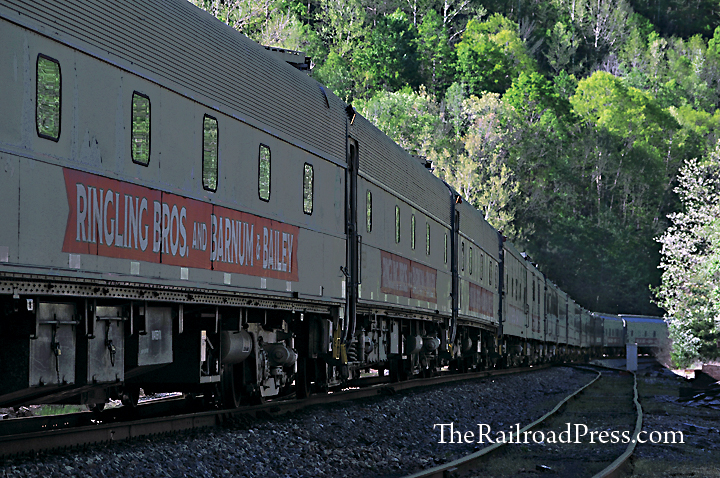
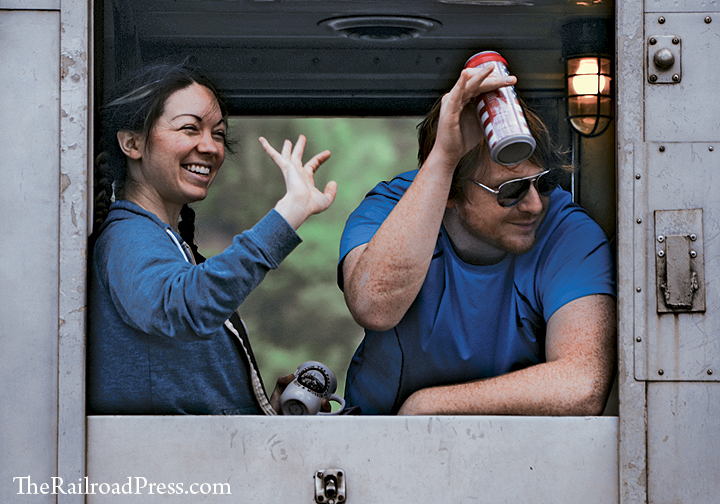
The train stopped on the wye at Elmore for a crew change before heading due north out of town. I photographed it several more times before leaving the train where it stopped near a grade crossing just outside West Virginia’s capital. It was time to head back home and prepare for the final run of the train from Charleston to Long Island.
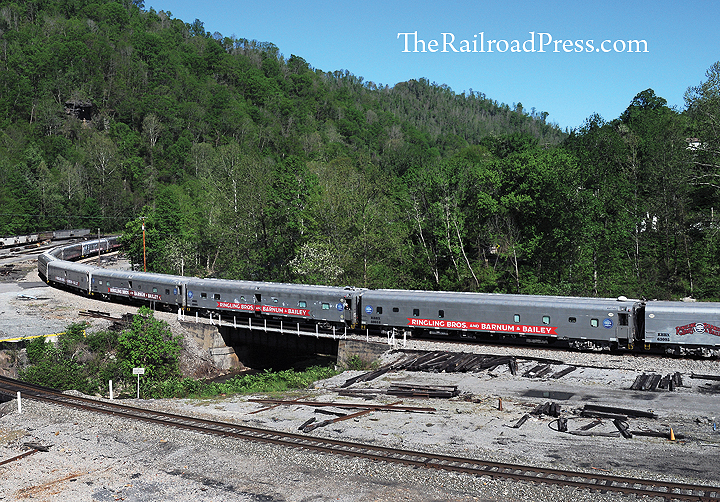
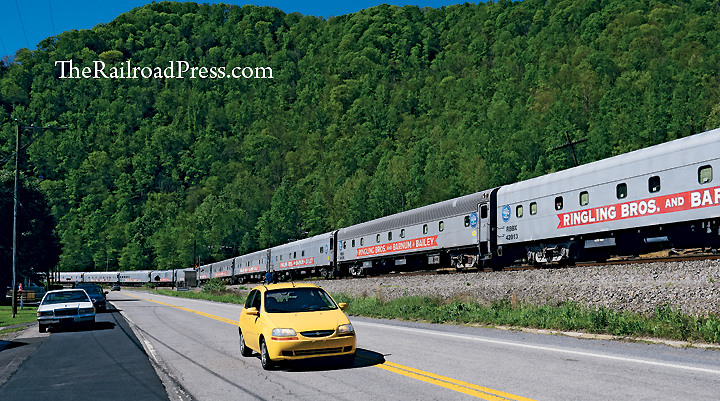
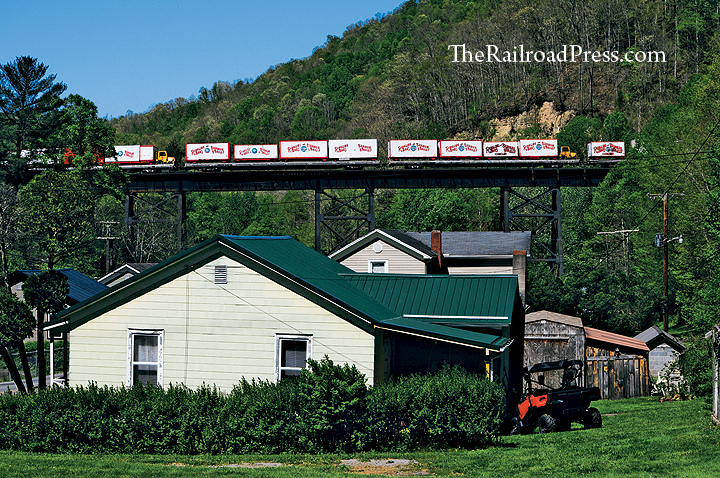
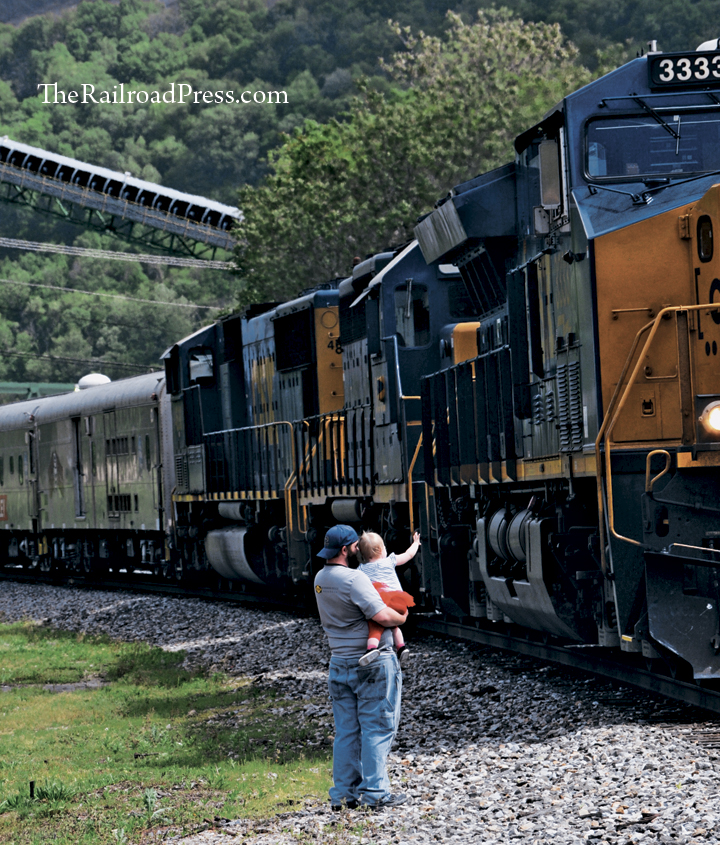
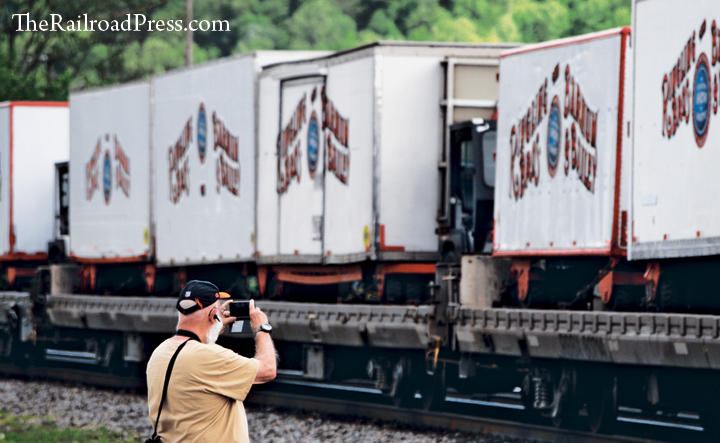
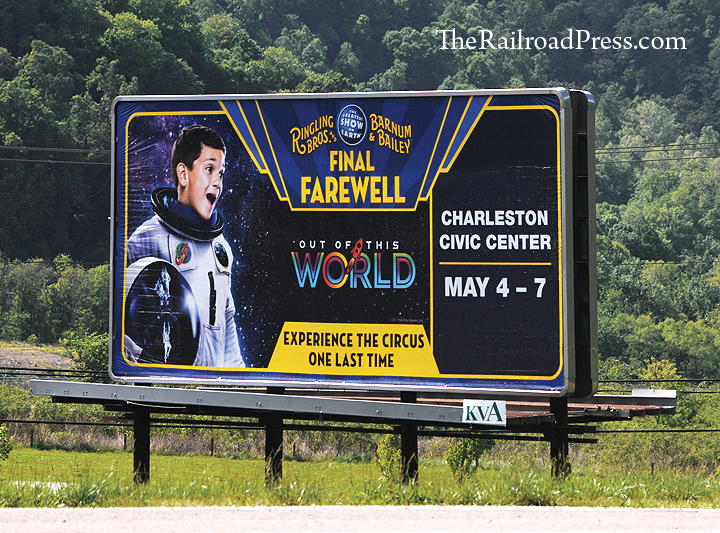
On the morning of May 8, I showed up bright and early to find the flatcars loaded with circus wagons sitting on a siding in the downtown area. The 3333 was still on the point and a pair of diesels, Norfolk Southern 6632 and CSX 4690 tied onto the hind end and dragged it to the Kanawha River Railroad’s (KNWA) Dickinson Yard at Belle, where the passenger cars were stored separately from the flats. The KNWA is a WATCO property that operates former Conrail trackage in this region. This line was originally the Kanawha & Michigan Railroad, a subsidiary of the New York Central, who reached deep into Appalachia to obtain coal for their hungry fleet of steam locomotives. CSX 3333 and 8882 were wyed and the 4690 was added as the trailing unit in the consist. Once the train was put together, it traveled down the KNWA main line and left the NYC for Virginian iron at Deepwater.
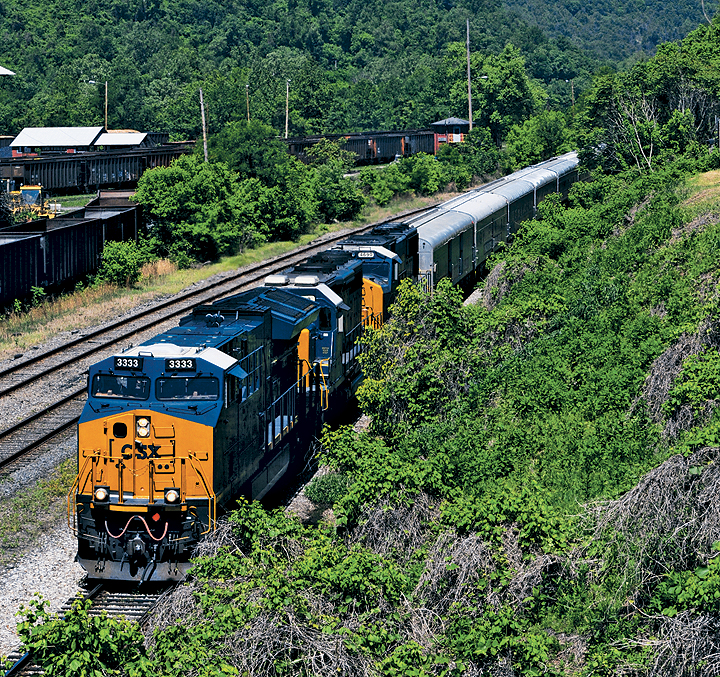
The Kanawha crew remained with the train to Elmore. It was a spectacular day for photography with a dome of high pressure providing a beautiful blue sky all day long. By the time the train reached Itman, the sun was starting to get low in the sky, so after one more set of photos at a rural grade crossing populated with an army of local residents, it was time to head east, get some rest and enjoy one more day of photography. There was one notable incident that occurred soon after leaving the train. I was stuck behind a flatbed tractor-trailer hauling a big piece of mining equipment on West Virginia State Route 97, so the journey out of the mountains was s-l-o-w. To make matters worse, the machinery he was hauling snagged some wires and dropped them down across the highway. They were flat on the road so I could drive over them, but in the next town, I stopped at the fire hall to let them know. There were about a dozen people participating in two noisy poker games in a small room. When I walked in you could hear a pin drop. I had 24 eyes staring a hole right through me as I choked out my news and immediately turned around to leave. I guarantee you that I was the most unpopular person in that whole town and I did not stick around and wait for them to thank me for doing a public service.
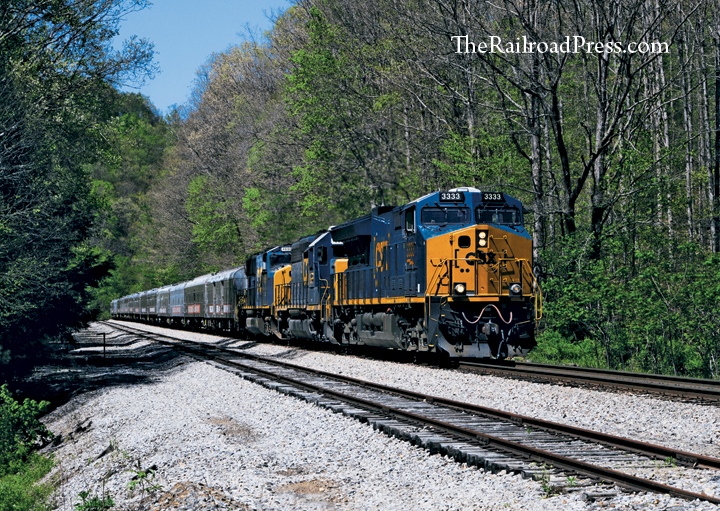
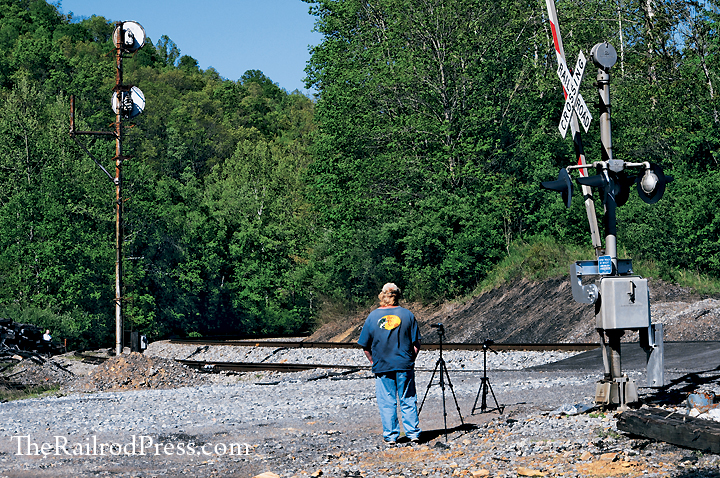
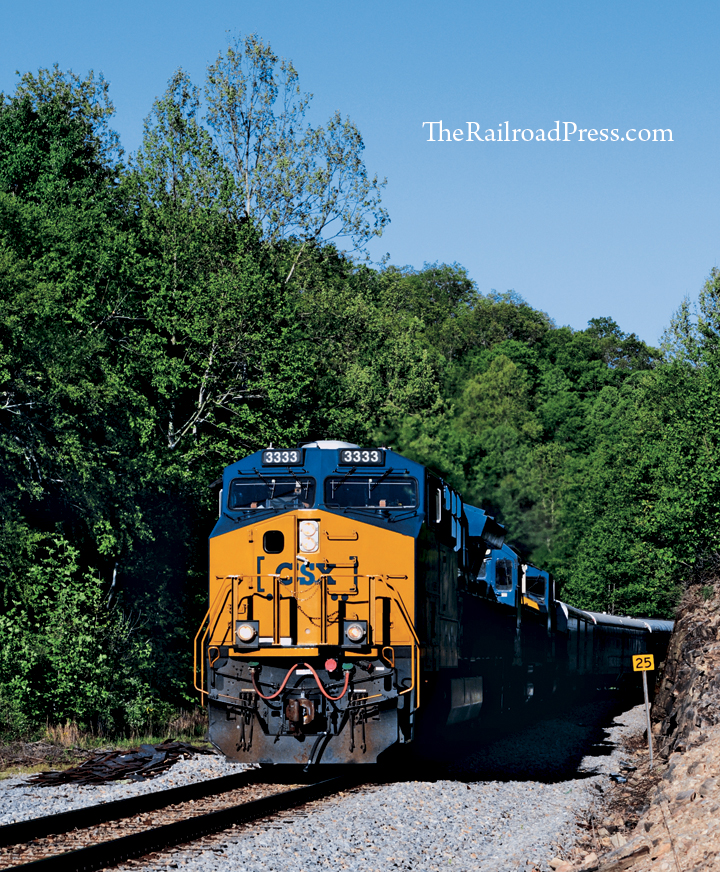
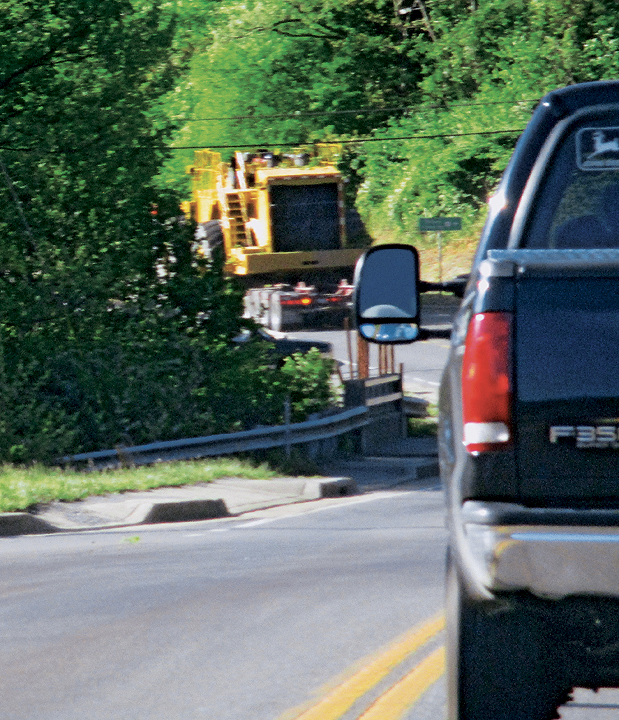
On the 9th, I first encountered the train passing color-position-light signals at Sampson, Virginia, on the Norfolk & Western Shenandoah Division main line between Roanoke and Hagerstown. The CSX power was replaced with six Norfolk Southern diesels for this leg of the journey, with the Virginian heritage unit trailing. This train was moving and I could only catch it once between Sampson and its crew change 30 miles away in the town of Shenandoah. There was a long delay here, as they had to wait for a southbound train before departing. There were a lot of families gathered around the train, so to pass the time, some of the performers put on a show for the kids! Remember, these people would be out of work in a few days, yet they cared enough to entertain the children. After getting to know some of the Ringling Brothers employees, I wasn’t surprised. They were some of the nicest people on the world and loved making people happy.
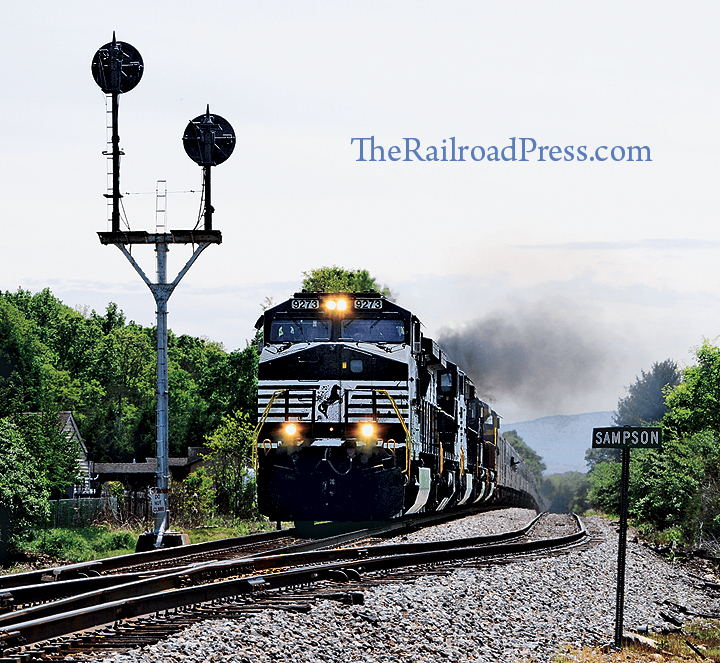
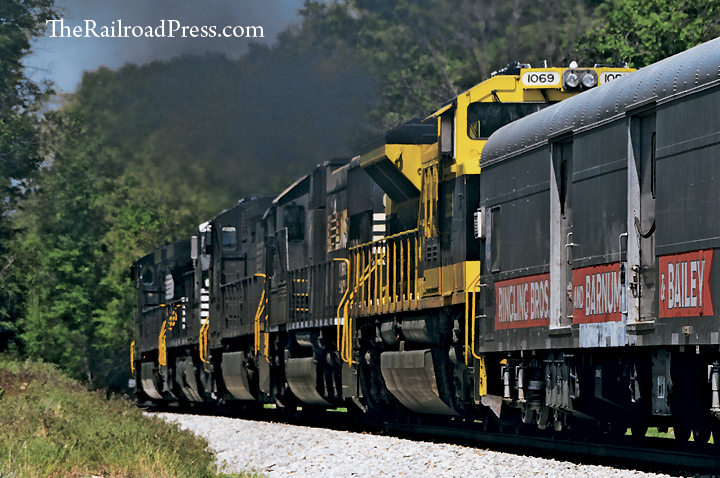
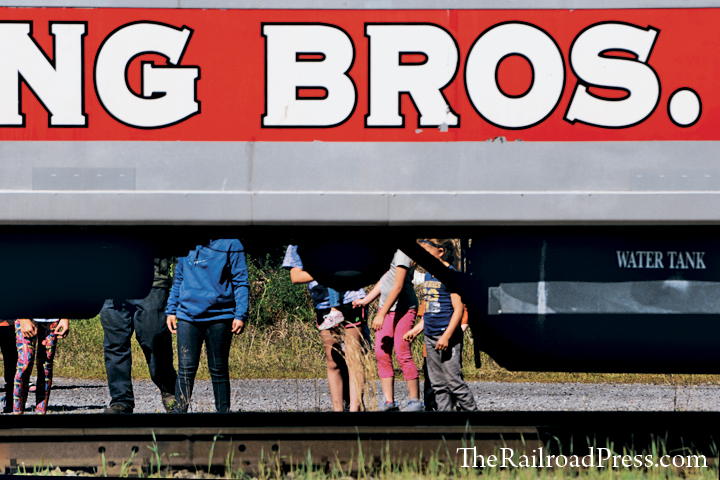
It was off to the races again, as the train sped north, reaching Hagerstown, Maryland, near dusk. There were people lining the tracks at every small town along the way, and there was a crowd waiting at the south end of Vardo Yard in Hagerstown. The train sat for several hours here, and the circus personnel started talking with the railfans and townsfolk that had gathered to see the train. It was like a big family gathering, with fantastic stories being shared and enjoyed. They even threw Ringling Brothers decals down to the crowd. I could have stayed there for days listening to their experiences. One of the interesting things I learned was that all of the animals were treated like royalty. “They ate better than us!” one of them blurted out and the others agreed. He said he even remembers stopping at supermarkets during crew changes to buy fresh fruit for the elephants. I am truly grateful that Norfolk Southern was very tolerant of the crowds. They never showed up to chase anybody out and in return, everyone behaved. I took some night photos and wished everyone well before heading home.
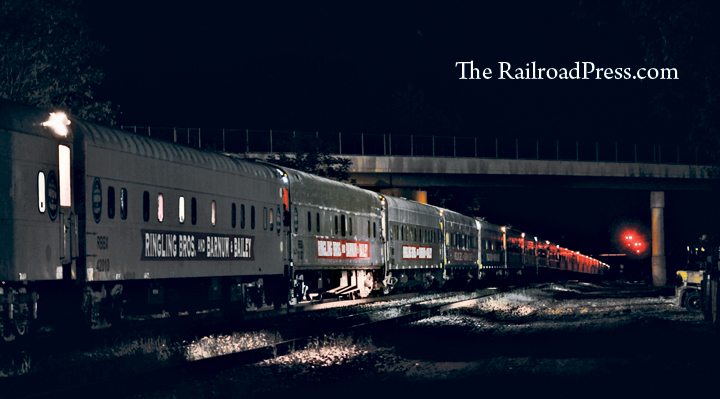
I can’t believe it’s been almost five years since the Last Circus Train plied the rails here in the United States. This was the most interesting and rewarding train chase I’ve ever participated in. The weather was perfect, the scenery was stunning and everyone I met was friendly — the other railfans, the families that came out just to see the train and especially the employees of the circus who taught me a lot about what it was like living on the train, traveling to different cities and performing for the public. Everyone realized the historic significance of the train on that day and I will always remember and the people I met.
Here are some related items that you might be interested in…
If you enjoyed this story, here is another Circus Train site that you might like…https://themetrains.com/rbbb-circus-trains-main.htm
As an Amazon Associate I earn from qualifying purchases.
